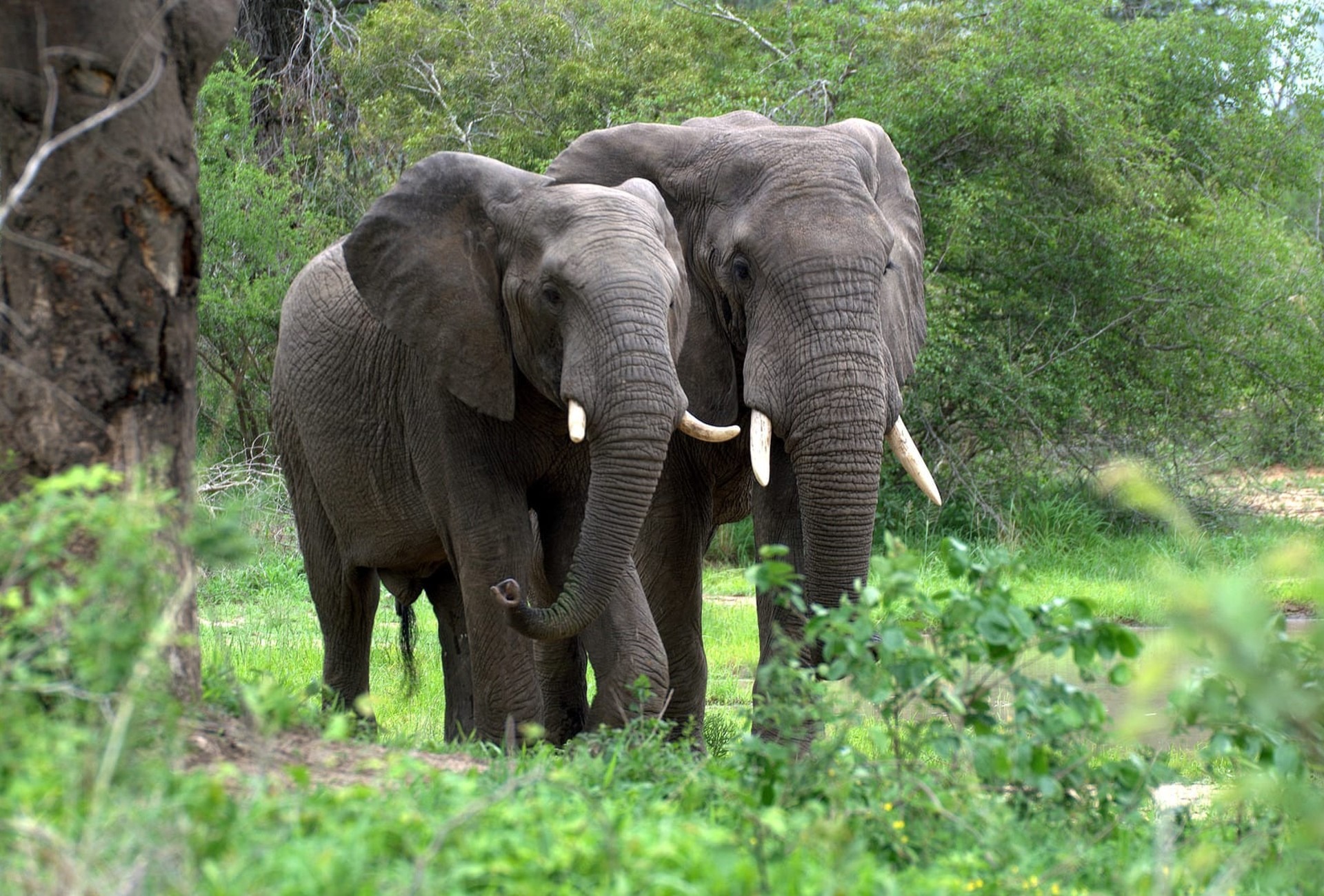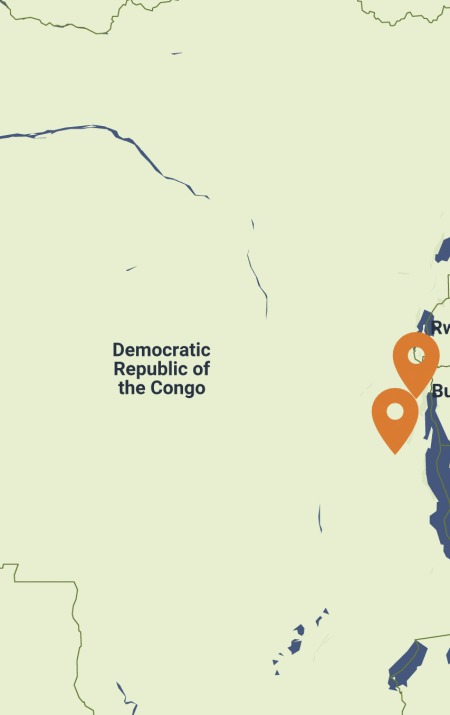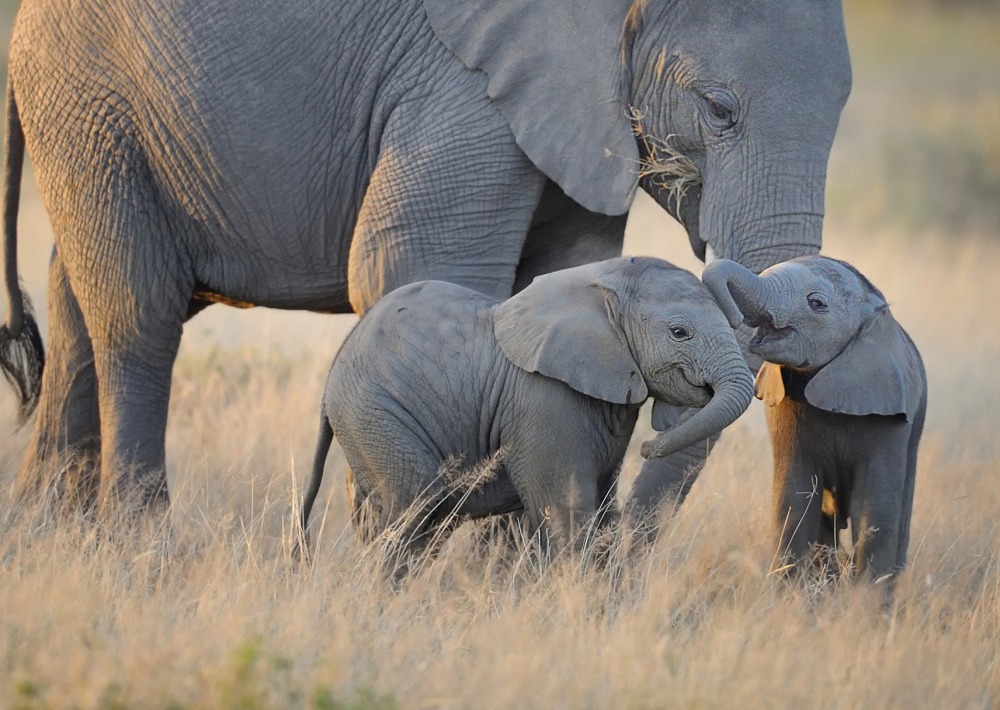
New Protection for Great Apes and Elephants
Support More Work Like ThisSupport More Work Like ThisCharacterized by its rugged mountains and vibrant rainforests, the Albertine Rift is one of Africa’s most biodiverse regions. The 750-mile long valley supports more than half of Africa’s bird species and 40% of its mammals.
-
Species at Risk
Eastern Lowland Gorilla (EN), Chimpanzee (EN), African Lion (VU), and African Elephant (VU)
-
Carbon stored
(Not Calculated)*
*(metric tons of CO2 equivalents) -
Partner
WCS’s Albertine Rift Valley Program and Congolese Institute for the Conservation of Nature (ICCN)
-
544,867 Proposed Acres Conserved by
Designation
-
Project Cost: $171,193

544,867
Characterized by its rugged mountains and vibrant rainforests, the Albertine Rift is one of Africa’s most biodiverse regions. The 750-mile long valley supports more than half of Africa’s bird species and 40% of its mammals.
-
Species at Risk
Eastern Lowland Gorilla (EN), Chimpanzee (EN), African Lion (VU), and African Elephant (VU)
-
Carbon stored
(Not Calculated)*
*(metric tons of CO2 equivalents) -
Partner
WCS’s Albertine Rift Valley Program and Congolese Institute for the Conservation of Nature (ICCN)
-
544,867 Proposed Acres Conserved by
Designation
-
Project Cost: £128,716

544,867
Characterized by its rugged mountains and vibrant rainforests, the Albertine Rift is one of Africa’s most biodiverse regions. The 750-mile long valley supports more than half of Africa’s bird species and 40% of its mammals. African Elephants, Lions, and several species of Great Apes – the Eastern Lowland Gorilla and Chimpanzee, among others – all inhabit the Rift.
Decades of civil unrest in the Democratic Republic of the Congo have restricted development opportunities and limited ecological damage. As the country emerges from that conflict, however, rapid deforestation has ensued and decisive action is needed to ensure that the region’s extraordinary wildlife continues to thrive in the future.
Rainforest Trust has partnered with the Congolese Institute for the Conservation of Nature (ICCN) and the Albertine Rift Valley Program of the Wildlife Conservation Society (WCS) to create a new protected area, Ngamikka National Park, and assist in the protection of Itombwe Reserve, which will safeguard the Albertine Rift’s endangered wildlife and rich biological legacy.
Explore the Democratic Republic of Congo

The Critically Endangered Grauer's Gorilla or Eastern Lowland Gorilla, by LMIMAGES

The African Lion (VU), by Seyms Brugger

African Savanna Elephants (EN), by Diana Robinson
Biodiversity
The Albertine Rift ranks as one of Africa’s most important regions for biodiversity and endemism. The region contains over 1,100 plants, 71 mammal species, and 26 reptile species. Of the 305 birds found in the Rift, 30 endemic species have been identified. In addition, 32 endemic amphibians have been found. And it’s likely these numbers will rise with new findings. In 2007, two mammals and four amphibians were discovered in the Rift.
Weighing up to 15,000 pounds, Elephants are the largest living terrestrial animal, and they are one of the most important wildlife species in the Rift. With an ecological influence that extends from shaping water sources to determining forest cover, Elephants exert an impressive impact on the environment. Many species, both plant and animal, benefit from the presence of Elephants. For example, nearly a third of native trees in Central Africa depend on Elephants for the effective dispersal and germination of their seeds. Alongside Elephants, Eastern Lowland Gorillas rank as one of the most endangered mammal species. These primates are extremely sociable by nature, and live in groups of up to 30 individuals with territories extending up to 15 square miles. Adult males can weigh up to 485 pounds and consume more than 40 pounds of food each day. Extremely intelligent, Gorillas are capable of learning sign language and using tools.
Challenges
Although hunting Great Apes is illegal throughout much of the Congo Basin, lack of enforcement allows poachers to persist. The consumption of Gorilla meat is considered a sign of prestige among urban elite and has contributed to continued decline in Gorilla populations. Combined with habitat loss, disease, and the illegal animal trade, hunting has decimated Lowland Gorilla populations, leaving only 5,000 in the wild.
Once numbering as many as three million, African Elephant populations have been decimated by decades of intensive ivory hunting. In 2011, African Elephants were slaughtered at a rate of nearly three an hour, with an estimated toll of 25,000 dead. Since then, another 45,000 have been killed. Habitat loss and human-elephant conflict compound the problem, and have taken a further toll on African Elephant populations. If current declines are not slowed, African Elephants could be extinct within a decade.
Communities
The widespread shortage of economic opportunities makes the prospect of creating protected areas an appealing option in the Albertine Rift.
A survey conducted in areas adjacent to the proposed Ngamikka National Park found the majority of those interviewed were in favor of creating protected areas. Reserves are often viewed as a means to highlight the importance of local wildlife and create employment in the ecotourism industry.
Solutions
Working with local partners, Rainforest Trust is supporting the creation of a new protected area, the 544,867-acre Ngamikka National Park, and assist in the protection of the 1,416,408-acre Itombwe Reserve. These reserves will safeguard the region’s endangered wildlife by placing nearly two million acres under protection.
Creating a long-term solution requires the involvement of local communities and Rainforest Trust’s local partners ICCN and the Albertine Rift Valley Program (WCS) will work with each of the small villages in surrounding areas to develop a detailed land-use plan. This plan will support sustainable livelihoods while minimizing human impacts on local wildlife. Designating park boundaries alone is not enough to discourage poachers in the Albertine Rift. Rainforest Trust is supporting the construction of necessary park infrastructure, including park headquarters and monitoring stations for park staff and rangers. With Rainforest Trust’s support, rangers will receive the training and preparation they need to ensure that wildlife within these reserves remains off limits to hunters.



